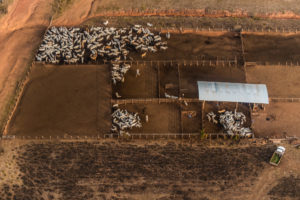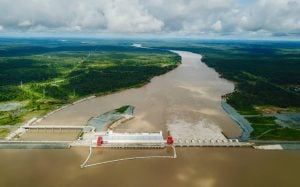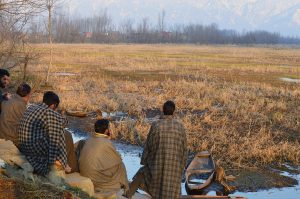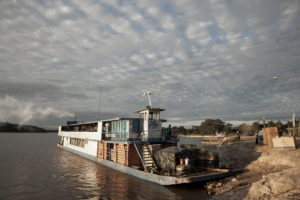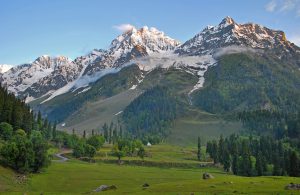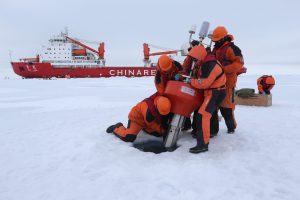The conflict in Kashmir is often seen through the lens of just the military, but natural disasters are increasingly playing a role, some of them exacerbated by climate change. Nowhere is this so clear as at the heavy deployment at the Siachen glacier, often referred to as “the highest battlefield on earth.”
“At least twice a week a man dies, occasionally from bullets or artillery, but more often from an avalanche, a tumble into a crevasse, or a high-altitude sickness—perils usually faced only by elite climbers. Not surprisingly, the men who serve in the war regard it as the supreme challenge for a soldier,” Kevin Fedarko, an American writer, observed in an article he wrote after spending two months at the Siachen glacier more than a decade and a half ago.
On November 18 of this year an avalanche in Siachen killed six people, including four soldiers and two porters. Within two weeks of that incident two more soldiers were killed by yet another avalanche on November 30. This is not new. From April 1984 to December 2015 India has lost 869 soldiers owing to avalanches, exposure to extreme cold and altitude sickness, according to official data from government of India. On February 6, 2016, another 10 Indian soldiers were buried by an avalanche. Since then – from October 18, 2016 to November 30, 2019 – as many as 55 Indian soldiers were killed by avalanches in Siachen, Gurez , Batalik and Machil. Pakistan has also lost hundreds of soldiers for the same reason. In 2012, a massive avalanche in lower Siachen killed 140 Pakistani soldiers at one go.
Climate change and avalanches
The retreat of glaciers and a higher frequency of avalanches in the Himalayas have been among the impacts considered “highly likely” by the Intergovernmental Panel on Climate Change (IPCC), in its 2014-15 report. This was reiterated in the recently released Hindu Kush Himalayan Monitoring and Assessment Programme (HIMAP) report by the International Centre for Integrated Mountain Development (ICIMOD).
Sonam Lotus, head of India’s Meteorological Department in Jammu & Kashmir said that the region has been witnessing climatic fluctuations over the past many years. “Only a scientific study can confirm whether these climatic fluctuations are resulting in increase in disasters or not,” Lotus said. While the HIMAP report confirmed the scientific consensus, the region has seen limited direct research because of the state of conflict.
A former researcher in the Snow and Avalanche Studies Establishment of India’s defence ministry had confirmed, two years back, in an interview with thethirdpole.net that the frequency of avalanches “has risen in Siachen in recent years.”
While speaking anonymously (because he was not authorised to speak officially), the researcher had said, “Our studies in recent years have clearly shown that minimum and maximum winter temperatures in Siachen glacier have steadily increased (since the glacier was occupied by troops in 1984) though with a lot of fluctuations. This is one of the important reasons why more avalanches are occurring.”
Mohammad Sultan Bhat, the head of the Geography department at University of Kashmir, said that research on climate science is still evolving in south Asia, but some studies carried out by IPCC in recent years have warned that extreme weather events would be quite frequent because of climate change in south Asia.
“Some events such as the occurrence of heavy snowfall as early as November for two consecutive years in 2018 and 2019 in Kashmir is certainly abnormal. But we need thorough studies to come to any conclusion,” he said.
Bhat observed that snow avalanches and landslides occur with more frequency in Gurez because of narrow valleys, its close proximity to Kargil and strong influence of western disturbances which cause heavy snowfall in Gurez and other high altitude areas of Kashmir such as Machil, Karen and Gulmarg. “Steepness of slopes is also a major cause especially in Gurez,” he added.
Shakil Romshoo, the department head at Kashmir University’s Earth Sciences said that the improvement in technology is helping the defence authorities to issue warnings about disasters which might be instrumental in reducing down the casualties. “It is true that more disasters are happening now. But is too early to connect them directly with climate change,” he said.
Thukjay Lotus, a porter who works at Siachen, told this correspondent at Panamik Village near the base camp of Siachen glacier in Ladakh that he finds avalanches the biggest threat in his work. “When we go there, we are always mindful of the danger of avalanches. Two years back, I had a narrow escape. In the last 10 years, a number of avalanches have occurred at Siachen many of them resulting in casualties,” Lotus said.
Getting essential supplies to the military posts in Siachen, with some of the Indian posts over 6,700 meters high, is costing both the countries hundreds of millions of dollars. For example, from 2012 to 2016, India has spent USD 1, 128 million on ration and clothing as per official figures from Indian government. India uses helicopters for dropping the supplies, while Pakistan, whose positions are closer to the road heads, uses porters and mules for taking the supplies to its positions.
At 71.4 km, the Indian controlled Siachen glacier in Karakoram Range is the second longest glacier outside the polar regions. The Karakoram Range, a long mountain range runs over a length of around 500 km forming an extreme high mountain environment. In mountaineering terms it is the area with one of the highest density of high peaks in the world. Four of the 14 peaks higher than 8,000 metres – K2, Gasherbrum I and II, and Broad Peak – are located at the uppermost portion of the Baltoro glacier in Baltistan, controlled by Pakistan.
Partly due to the conflict over Siachen, the area around Siachen has the largest number of unclimbed peaks in the world, of which the Saltoro Kangri II (7,705 m) is the highest.
![<p>A local in the Nubra Valley of Ladakh, looking towards the Korakoram mountain range, which hosts the Siachen Glacier [image by: Athar Parvaiz]</p>](https://dialogue.earth/content/uploads/2019/12/A-local-in-Nobra-Valley-of-Ladakh-looks-towards-the-Korakoram-mountain-range-which-hosts-the-Siachen-Glacier-Photo__Athar-Parvaiz.jpg)


